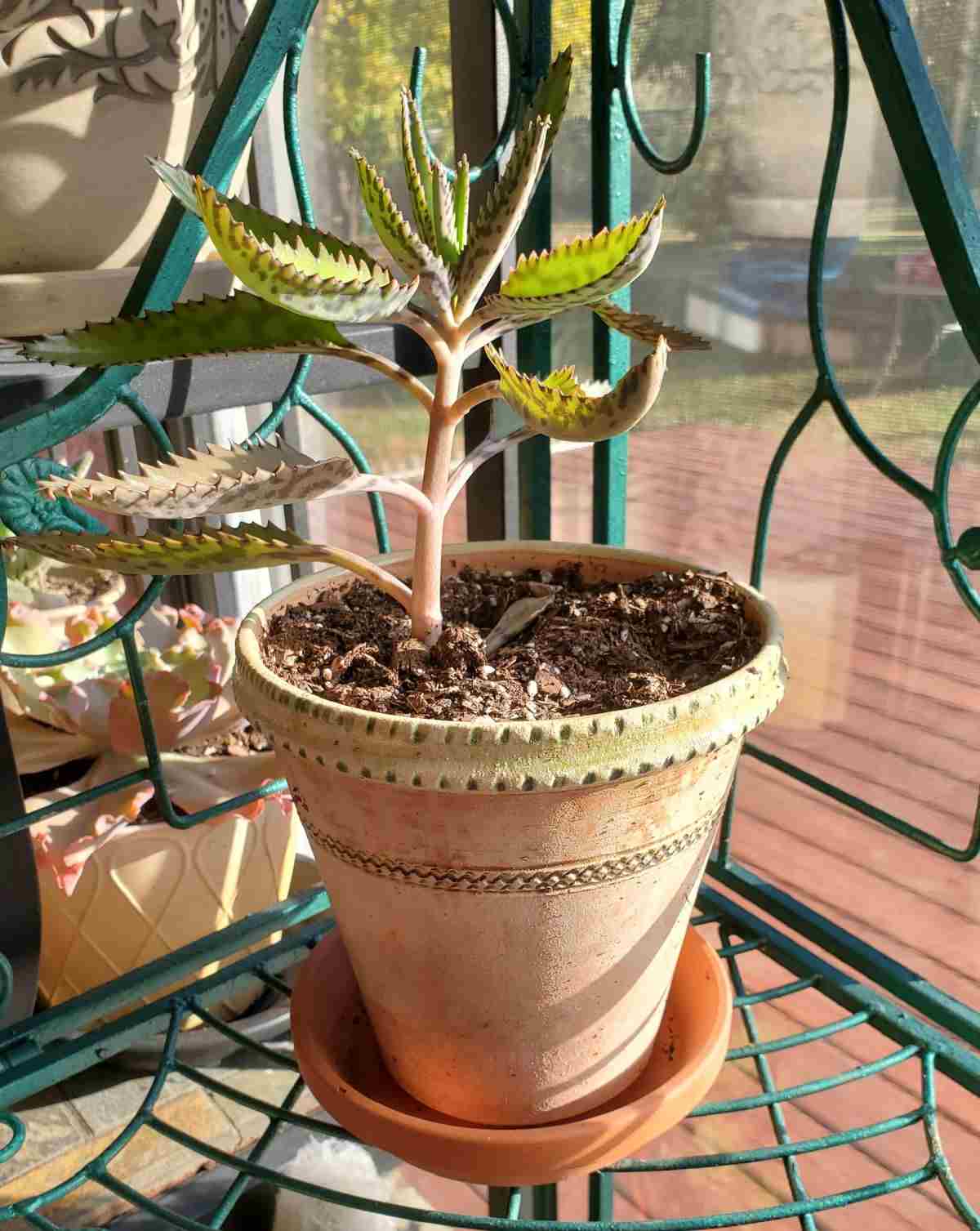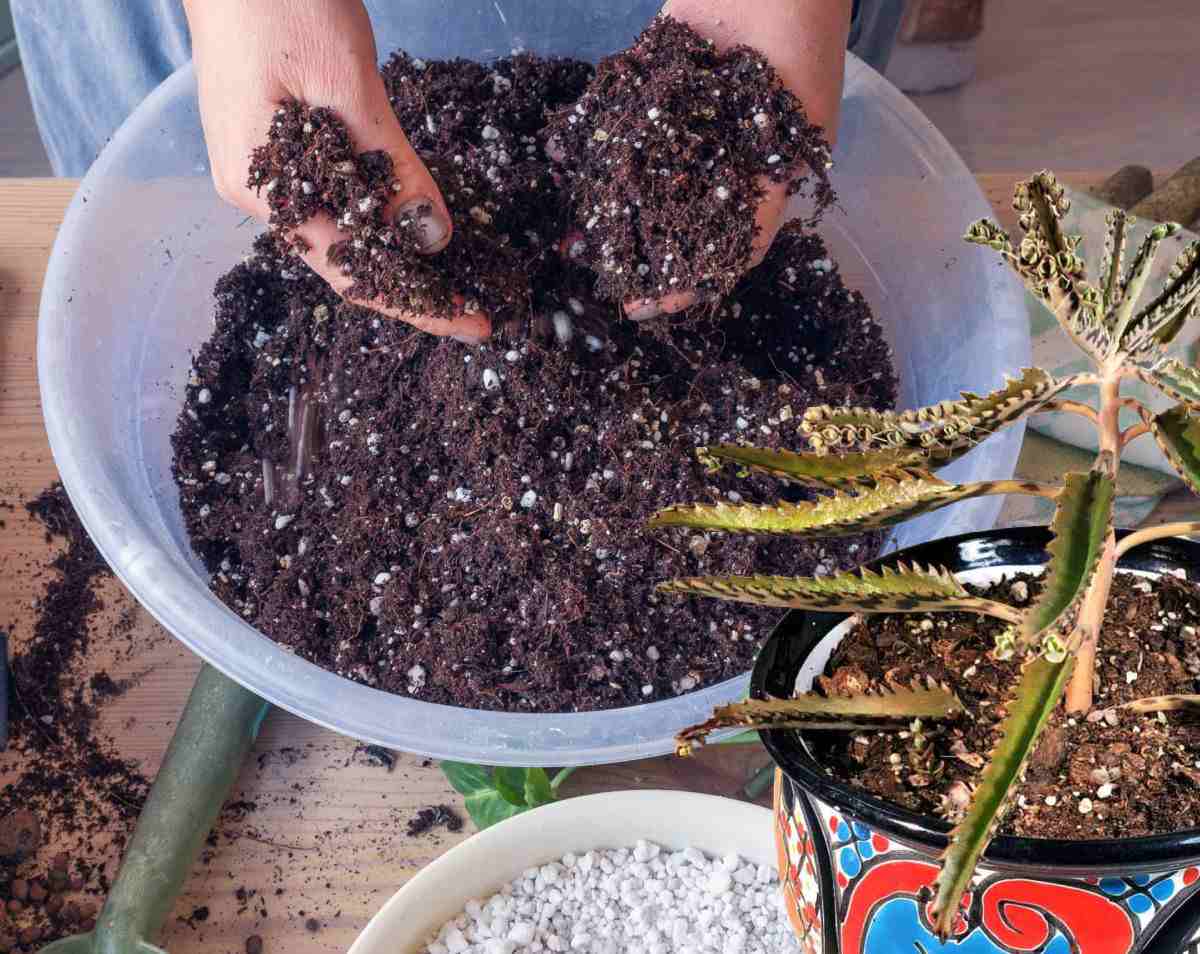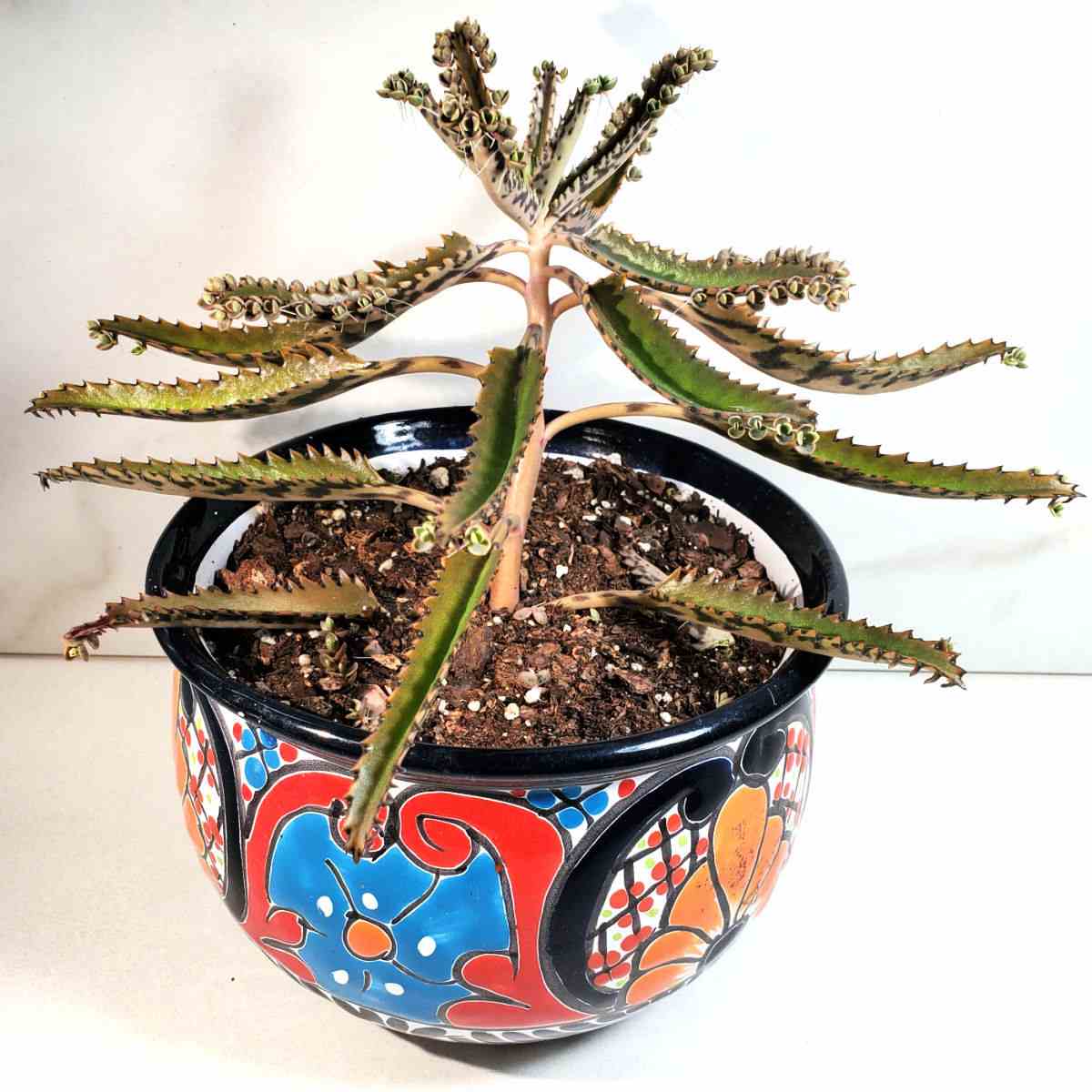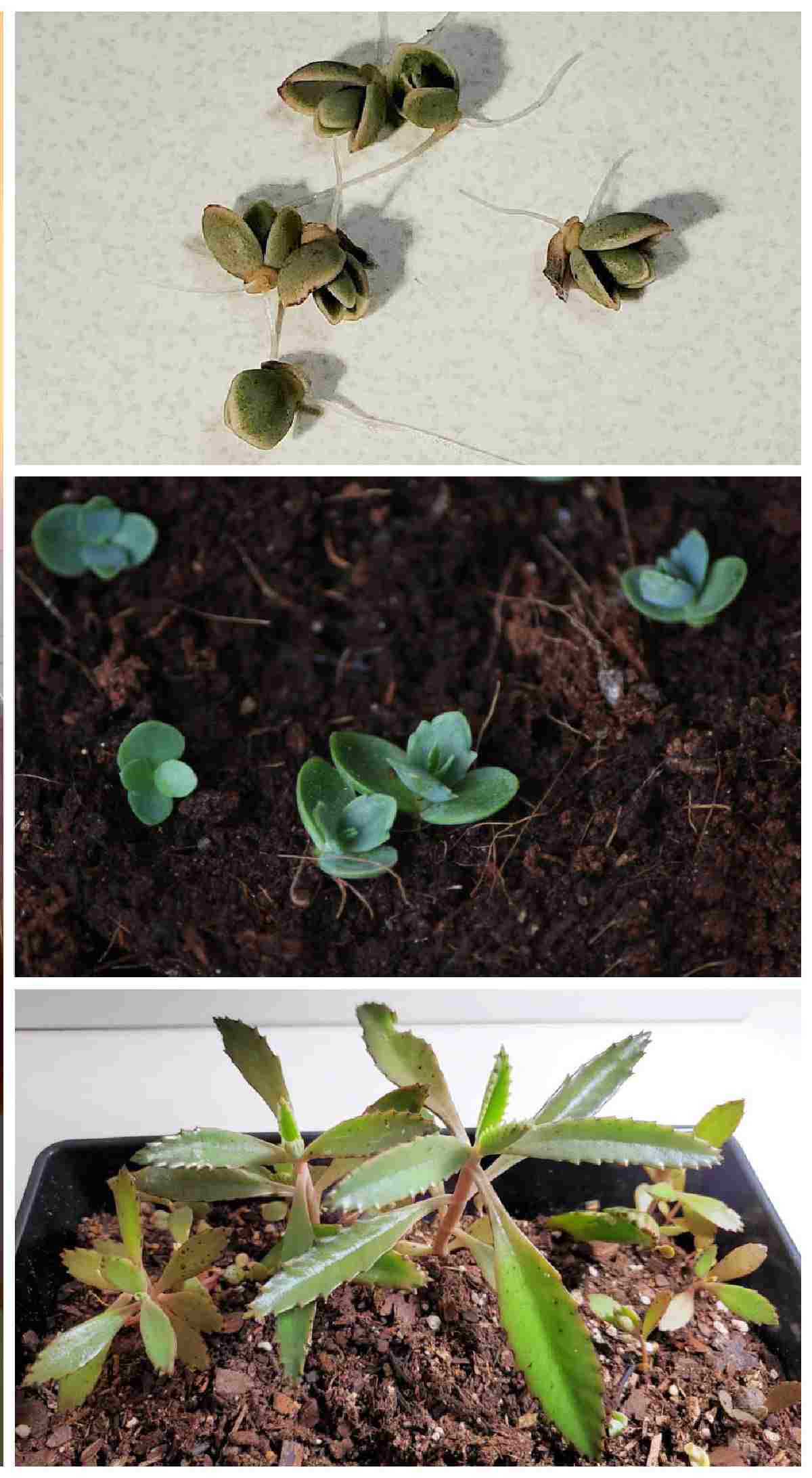Kalanchoe houghtonii, also known as “mother of thousands,’ along with other common names, is a tender succulent that is very easy to grow. In fact, left to its own devices and uncultivated, the plant can be quite invasive.
These growing tips for mother of thousands succulent will show you how to easily grow this interesting succulent. It is the perfect plant for those interested in succulent propagation.
This kalanchoe variety is a hybrid made through an experimental crossing of kalanchoe daigremontiana and kalanchoe delagoensis. It is named after Arthur Duvernoix Houghton.
The new plant escaped cultivation and spread to many areas of the world. Keep reading to learn how to grow this prolific succulent plant.

Kalanchoe houghtonii is a genus of succulents that are often seen at garden centers. They are grown as stand alone plants or in dish gardens of mixed succulents.
If you are looking for a plant which is great for those with a brown thumb, kalanchoe houghtonii is a good choice for you. It is perfect for those new to growing succulents.
Throughout this post are affiliate links to Mountain Crest Gardens, my favorite supplier of succulents. I earn a small commission, at no extra cost to you if you purchase through an affiliate link.
Facts about kalanchoe houghtonii
Brush up on your knowledge of kalanchoe houghtonii with these facts about the plant.
- Family: crassulacae
- Genus: kalanchoe
- Cultivar: ‘houghtonii’
- Common names: mother of millions hybrid, mother of thousands, Houghton’s hybrid
- Less commonly used names: Mexican hat plant, alligator plant, good luck plant, devil’s backbone plant (These are normally used for the traditional mother of thousands succulent plant.)
- Native to: Madagascar

Kalanchoe houghtonii is often confused with kalanchoe daigremontiana. The difference can be seen at the base of the leaves. K. daigremontiana has a lobe at the base of the leaf and its leaves are wider than K. houghtonii.
The leaf base of kalanchoe houghtonii have narrow a tapering like a wedge shape.
Mother of thousands vs mother of millions plants
It is worth mentioning these two common names for this succulent. Mother of thousands and mother of millions are often confused with each other.
And no wonder why since they look quite similar! The difference is in the shape of their leaves.

Mother of thousands has wider leaves that grow in pairs. Along the edges of the leaves, small plantlets develop. Mother of millions have narrow leaves and the plantlets form at the ends or tips of the leaves.
In the case of kalanchoe houghtonii, the leaves are narrow and the plantlets grow along the leaf margins as well as on the tips. It really is a hybrid and explains the reason for both common names!
How to grow kalanchoe houghtonii (also called kalanchoe x houghtonii)
There are many mother of thousands succulent varieties and all have similar growing tips. Follow these guidelines for kalanchoe houghtonii plant care.
Sunlight needs for mother of thousands plants
Kalanchoe houghtonii likes bright light or lightly filtered shade. Be careful of giving it too much sunlight which can burn the tips of the leaves.
The plant needs at least 4-5 hours of direct sunlight for best results.

I keep my plant in a sunny south-facing plant for the winter months and give it a summer outdoors.
Watering requirements for kalanchoe houghtonii:
A good way to water is the “soak and drain” method. To do this, bring the plant to the sink and give it a good soak, allowing the water to drain out of the drain hole in the bottom of the pot.
Mother of thousands succulent plants need infrequent watering. Over-watering can cause rot on the roots and upper parts of the plants.
Pick containers that have good drainage holes. Water deeply so that the moisture runs out the hole, and then wait for the soil to dry before you water again.

Kalanchoe houghtonii is very drought tolerant. Try not to water on the leaves, but only add water to the soil.
Water consistently through fall until winter when the plant is actively growing. Reduce watering during the winter months when the plant is mostly dormant.
This post may contain affiliate links. I earn a small commission, at no extra cost to you if you purchase through an affiliate link.
Soil needs for mother of thousands plant
Like all succulents, a well draining soil mix is needed for kalanchoe houghtonii since the plant is prone to root rot. You can choose a specially formulated soil for succulents, or add perlite and coarse sand to ordinary potting soil.

Avoid excess organic matter in the soil of kalanchoe houghtonii.
Kalanchoe houghtonii likes a neutral to slightly acidic soil with a pH about 7 – 7.5.
How to fertilize
It is not necessary to fertilize, but doing so will encourage growth and promote flowering.
Feed twice a week during the growing season with a fertilizer for succulents. Either a liquid fertilizer or slow release granules works.
Do not fertilize when the plant is dormant, during the winter months.
Avoid fertilizers that are peat-based. Since succulents need to completely dry between each watering, it is difficult to quickly soak the roots of a succulent grown in peat.
Kalanchoe houghtonii flowers and foliage
Kalanchoe houghtonii has an upright growing habit with boat shaped leaves with serrated margins. The leaves usually have purple splotches on the under side.
These leaves bear tiny plantlets along their edges.
The plant can is prolific and can be very invasive. If grown in a garden bed, it can choke out nearby plants. For this reason, kalanchoe houghtonii is best grown in a pot.
The mother of thousands flowers are pendulous, and come in shades from pinkish yellow to dark red. The flower stalk is tall and can contain up to 100 long-lasting flowers.

This succulent flowers in late winter to early spring from the second year of growth going forward. Like the Christmas cactus, kalanchoe houghtonii produces flowers during shorter days with cool temperatures.
Mature size
Kalanchoe houghtonii will grow to over a foot in height quite quickly.
In the right conditions, the stem of a mature plant can reach up to three feet high and the leaves can be 6-8 inches long and 1 1/2-2 inches wide. As it grows, the plant will likely need frequent repotting.
Large plants can get very top heavy, since the leaves and plantlets are so heavy. This can cause the stem to bend down and send out lateral roots.

This happened to my plant last summer. Fortunately, stem cuttings root easily, so I was able to start my plant in a smaller size when I brought it in for the winter.
Diseases and insects
Like most succulents, fungal diseases caused from over-watering are something to be on the look out for. This could show itself with limp leaves that easily fall off.
Kalanchoe houghtonii is not usually affected by pests.
The most frequent diseases are those caused by fungi, which cause root rot and the appearance of white spots on the leaves, or the blackening of the tips. Taking care when watering and allowing the plant to dry between waterings will avoid this.
Cold hardiness zones for kalanchoe houghtonii
Kalanchoe houghtonii is considered a tender succulent. You can grow it outdoors all year long in the warmer zones – 10a to 11b.
If your temperatures are colder than this, you should grow this mother of thousands variety as an indoor plant. It can be moved outside in the summer months and will benefit from this.
Tender succulents like this variety will not survive a hard frost. Be sure to bring the plant indoors if there is a risk of freezing temperatures.
Mother of thousands plant grows well on a sunny window sill or under a grow light.
Get some ideas for succulent containers for your kalanchoe plant. You’ll be amazed at some common household items that can be used.
Share this post for growing kalanchoe houghtonii on Twitter
If you enjoyed these growing tips for mother of thousands succulent plant, be sure to share them with a friend. Here is a tweet to get you started:
Kalanchoe houghtonii is commonly called mother of thousands, alligator plant, devils backbone plant, or Houghton's hybrid. It is a succulent plant native to Madagascar. Find out how to grow it on The Gardening Cook. Click To TweetHow to propagate mother of thousands
Mother of thousands propagation is easy since this plant has lots of offsets that are just waiting to root. The tiny little plantlets even have small roots while growing on the leaf edges.

Get new plants for free by propagating kalanchoe houghtonii from stem cuttings that root easily, or from the babies which drop from the plant leaves to the soil below.
The leaves of kalanchoe houghtonii are also easy to propagate. You simply place the leaves on the surface of some soil until they begin to take root.
Small plants will develop and can be potted up when rooted.
Toxicity of kalanchoe houghtonii – highly toxic
Note about toxicity: One should always take care growing plants around small children and pets.
Even with plants that are considered safe, children and animals might still chew on them. This might give mild affects once they are ingested.
In the case of kalanchoe houghtonii one must take extra care with pets and children. All parts of this plant, especially the mother of thousands flowers, are poisonous if ingested.
Mother of thousands plant for sale
Check the garden center of both Lowe’s and Home Depot. I found my plant at a small local garden center.
The Farmer’s Market is a great place to purchase succulents. The plant is also available online:
- Get pink butterfly mother of thousands at Amazon
- Get kalanchoe houghtonii babies at Etsy
- Buy kalanchoe houghtonii at Mountain Crest Gardens (my favorite supplier of succulents online)
Be sure to check out my tips for buying succulents. This gives information on what to look for both locally and when buying online.
Pin these growing tips for kalanchoe houghtonii
Would you like a reminder of this post for how to grow mother of thousands succulent plant? Just pin this image to one of your Pinterest succulent boards so that you can easily find it later.
You can also watch our video on YouTube.

How to Grow Kalanchoe houghtonii - Mother of Thousands Plant

kalanchoe houghtonii is a tender succulent that produces small plantlets along the edges of its boat-shaped leaves.
It is best grown in a pot, since it can be very invasive in a garden bed.
Print out the growing tips below and keep them in your garden journal.
Materials
- 1 kalanchoe houghtonii plant
- Succulent fertilizer
Tools
- Watering can
Instructions
- Sunlight needs - Bright light - 4-5 hours of sunlight a day.
- Watering requirement: Water during the growing season but let the plant dry out between waterings. Slow down greatly on watering during the winter months when the plant is dormant.
- Fertilizing: Not necessary but a fertilizer during the growing season will stimulate growth and flowering. Avoid peat-based fertilizers.
- Growing Season: Spring through fall. Dormant in winter.
- Propagation: Stem cuttings, leaves and small plantlets all root easily. Can also be propagated from seed.
- Cold Hardiness: Zones 10a -11b. In colder zones bring in for the winter months. The plant will not survive a hard freeze and frost will damage it, too.
- Toxicity: All parts of the plant are highly toxic.
- Best planted in a pot, since the plant is invasive in the ground.
